Wat Pho (Temple of the Reclining Buddha)
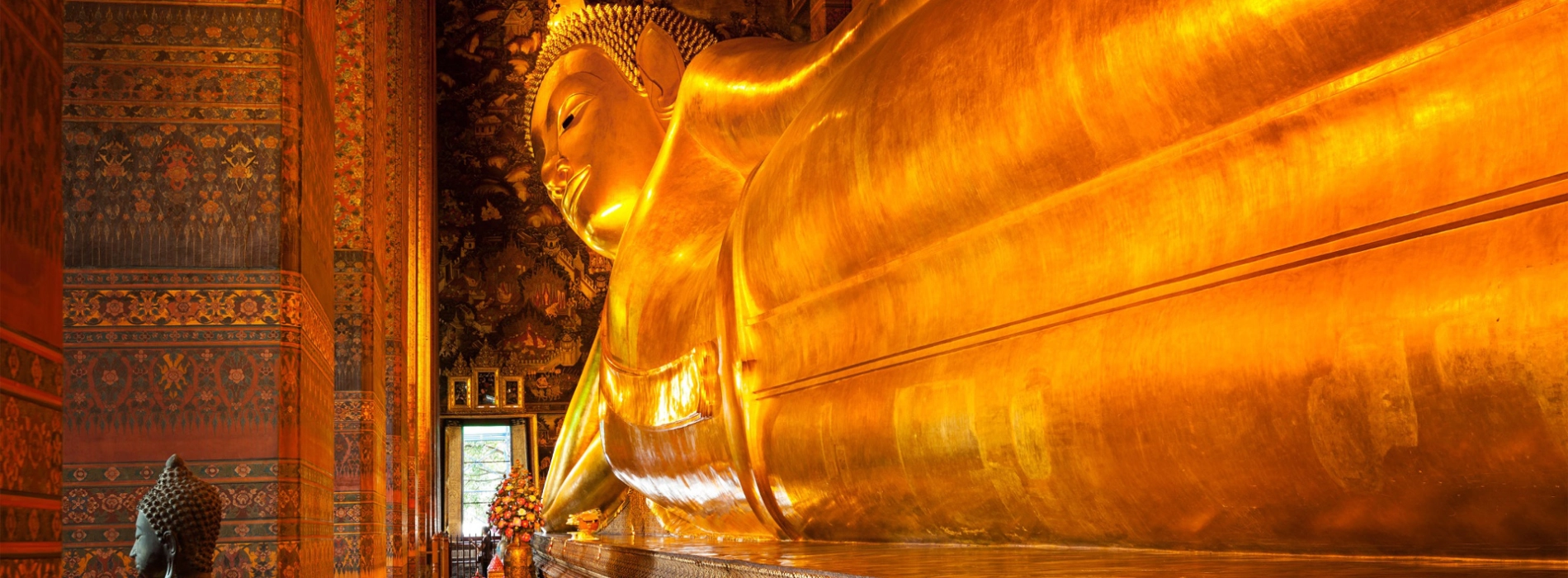
Wat Pho, officially known as Wat Phra Chetuphon Vimolmangklararm Rajwaramahaviharn, is a venerable Buddhist temple complex nestled in the heart of Bangkok, Thailand. Located south of the Grand Palace along the Chao Phraya River, Wat Pho is a sprawling complex featuring a harmonious blend of architectural styles, including Ayutthaya and Rattanakosin influences. Its most iconic feature is the colossal reclining Buddha, Phra Buddhasaiyas, a golden statue symbolizing the Buddha's entry into Nirvana. The temple is also renowned as the birthplace of traditional Thai massage, offering a school where visitors can learn and experience this ancient healing art. Wat Pho's significance extends beyond its religious and historical aspects; it serves as a center for traditional arts, housing murals, sculptures, and inscriptions that depict Buddhist teachings. With its cultural richness and spiritual ambiance, Wat Pho stands as a captivating destination for both tourists and pilgrims, inviting exploration of Thailand's profound cultural heritage. Let's explore Wat Pho with Asia King Travel!
Wat Pho's history is deeply intertwined with the historical developments of Thailand, spanning several centuries. Established in the 16th century, during the Ayutthaya Kingdom, the temple was originally named Wat Photharam. It underwent significant changes and renovations under the reign of King Rama I of the Chakri Dynasty in the 18th century.
In 1781, after the fall of Ayutthaya and the establishment of Bangkok as the new capital, King Rama I ordered the reconstruction and expansion of Wat Pho. The temple was given a new name, Wat Phra Chetuphon Vimolmangklararm Rajwaramahaviharn, reflecting its elevated status. The king sought to create a center of learning and culture, making Wat Pho not only a religious institution but also a place for education and traditional Thai arts.
One of the most notable contributions of King Rama I was the creation of the Phra Buddhasaiyas, the massive reclining Buddha statue that has since become an iconic symbol of Wat Pho. The king also collected and preserved numerous inscriptions, texts, and artifacts, enhancing the temple's role as a repository of Thai cultural and religious heritage.
Throughout the subsequent reigns, Wat Pho continued to receive royal patronage and underwent further renovations. The temple complex expanded to include additional structures, statues, and stupas. It played a crucial role in the preservation and promotion of traditional Thai medicine, particularly as the birthplace of the Wat Pho Thai Traditional Medical and Massage School.
Over the years, Wat Pho has maintained its significance as a center for religious practices, education, and the promotion of traditional arts. Today, it stands as a living testament to Thailand's rich history and cultural heritage, welcoming visitors from around the world to explore its sacred grounds and admire its architectural and artistic splendor.
Wat Pho, being one of the most significant and revered temples in Bangkok, Thailand, boasts a plethora of attractions that draw visitors from around the world.
Reclining Buddha (Phra Buddhasaiyas): The highlight of Wat Pho is the enormous gold-plated Reclining Buddha, which measures 15 meters in height and 43 meters in length. This iconic statue represents the Buddha entering Nirvana and is a must-see for visitors.
.jpg)
The Reclining Buddha - The state of ultimate liberation from the cycle of birth and death.
Phra Ubosot: This main hall is the spiritual center of Wat Pho and features stunning architecture, intricate murals, and a revered Buddha image. The hall is used for important religious ceremonies and rituals.

Phra Ubosot serves as the spiritual heart of Wat Pho
Phra Maha Chedi Si Rajakarn: This cluster of four stupas, adorned with colorful ceramics, is dedicated to the first four Chakri kings of the Rattanakosin Kingdom. Each stupa has unique architectural characteristics.
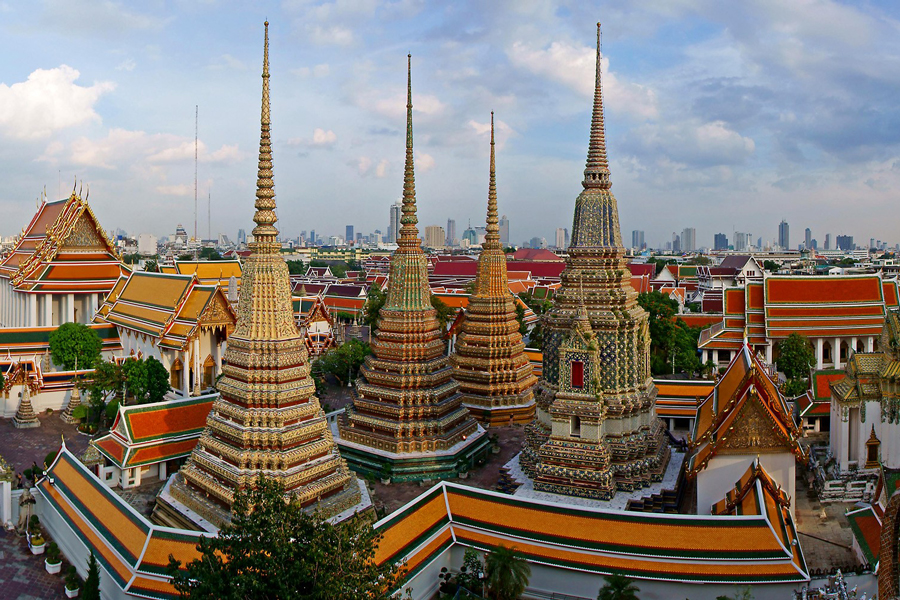
Phra Maha Chedi Si Rajakarn - a testament to the respect for the Chakri kings
Phra Mondop (The Library): This library houses sacred Buddhist scriptures and is surrounded by a courtyard with 52 individual Buddha images. The building itself is a fine example of Thai architectural design.
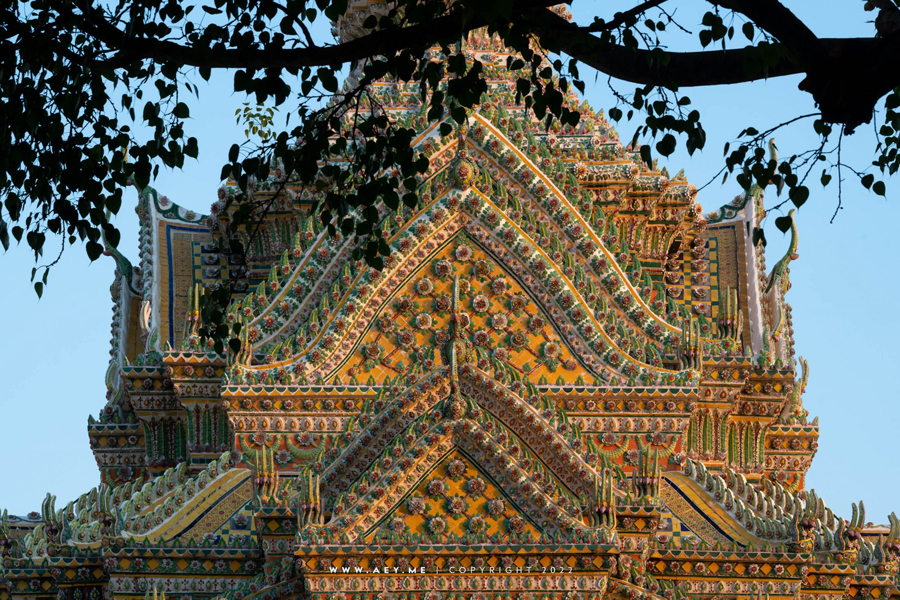
Dome of Phra Mondop
Wat Pho Thai Traditional Medical and Massage School: Wat Pho is recognized as the birthplace of traditional Thai massage. The school within the temple complex offers courses in Thai massage, and visitors can also experience authentic Thai massage services.
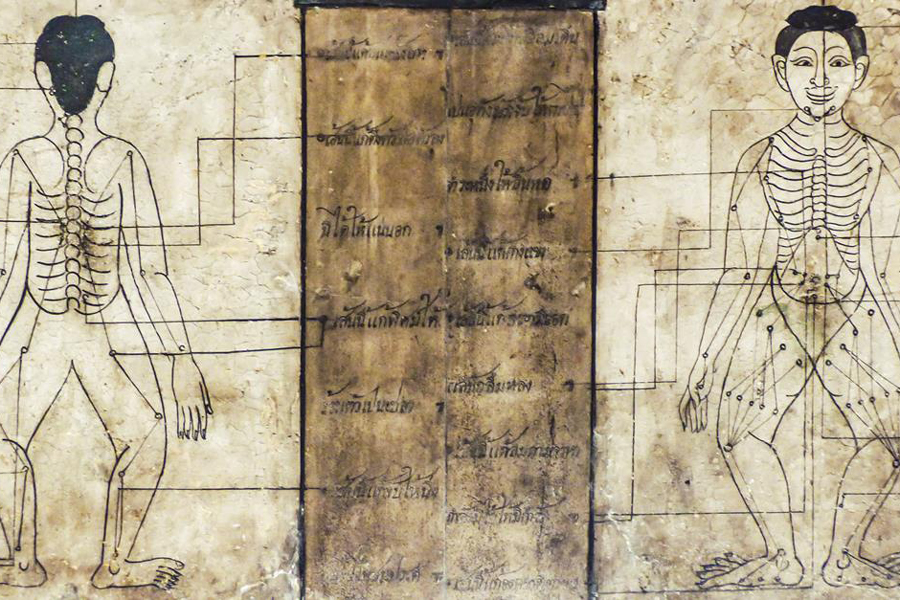
Drawing for the massage course at Wat Pho
Yaksha and Yakshini Statues: Guardian statues, known as Yaksha and Yakshini, are positioned around the temple complex, adding to the overall aesthetic and spiritual ambiance.
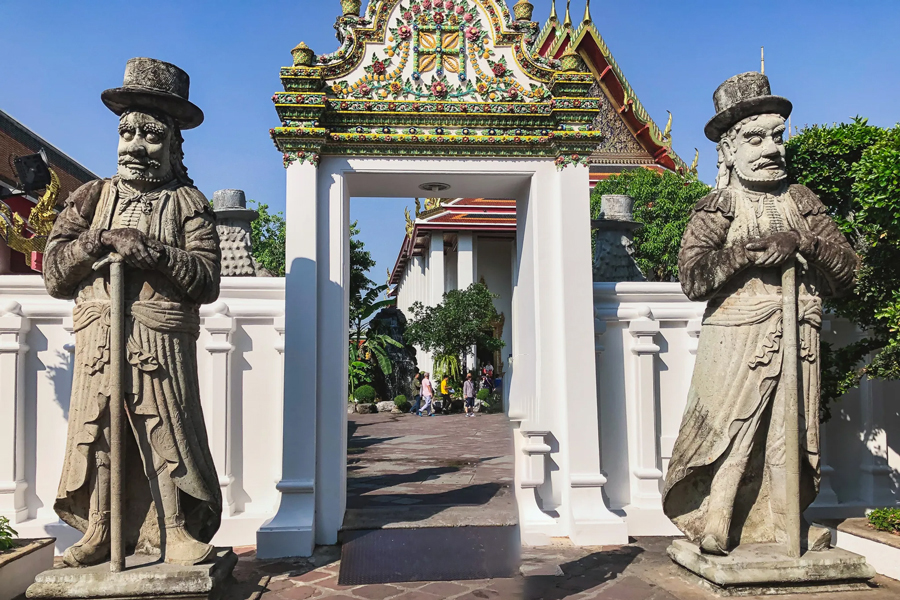
Yaksha and Yakshini - The guardian spirits in Indian and Southeast Asian religions
Positioned in the Rattanakosin area within the Phra Nakhon district of Bangkok, Wat Pho Temple finds its home in the heart of the Rattanakosin peninsula, often referred to as Bangkok's old town. This district is renowned for its abundance of distinctive historical artifacts and picturesque landscapes. Notable landmarks in this vicinity include the esteemed Royal Palace of Thailand, the captivating Siam Museum, the revered Wat Saket, the lively Khaosan Road, and several other intriguing destinations. The Rattanakosin area stands as a testament to Bangkok's rich cultural and historical heritage, attracting visitors with its unique charm and wealth of fascinating attractions.
Opening hours: 8:30 a.m. - 6:30 p.m. (massage service opens 9:00 a.m. - 4:00 p.m.)
Ticket price: 200 baht (massage price 420 baht/hour)
Bangkok, Thailand shares a climate that is fairly similar to our own country. Positioned in the tropical monsoon zone, the average temperatures are consistently high. Optimal months for visiting Wat Pho temple would be during the latter part of the year when the winter season prevails, offering more moderate temperatures suitable for sightseeing and exploration. It is advisable to avoid the peak rainy season from June to August when planning a visit to Thailand and Wat Pho temple. Furthermore, Wat Pho temple hosts various traditional festivals throughout the year, providing visitors with opportunities to plan their trips and experience these cultural events.
For those planning to visit and pay homage to the ancient Buddha at Wat Pho, there are several transportation options available, including the river bus, bus, and MRT.
If you have the option for the river bus, you can either walk or take a tuk tuk to Hua Lamphong wharf. Once on the boat, inform the boat staff that you're heading to Wat Pho, and they will guide you on where to disembark. After alighting, a brief walk of a few minutes will bring you to the revered Wat Pho.
Alternatively, if you choose to take the bus, you have multiple routes to consider, such as numbers 01, 03, 06, 09, 12, 25, 32, 43, 44, 47, 48, 51, 53, 82, or 103. Given the central location of Wat Pho in Bangkok, you also have the option of using Grab or a traditional taxi. It's important to note that taxi and Grab prices in Thailand can be relatively high.
For those preferring the MRT, catch line 508A at Siam Center. Once you reach Pak Nam - Sanam Luang, disembark and walk straight for approximately 350 meters to reach the splendid Wat Pho temple. Whether by river bus, bus, or MRT, each mode of transportation offers a unique journey to this historical and sacred site in Bangkok